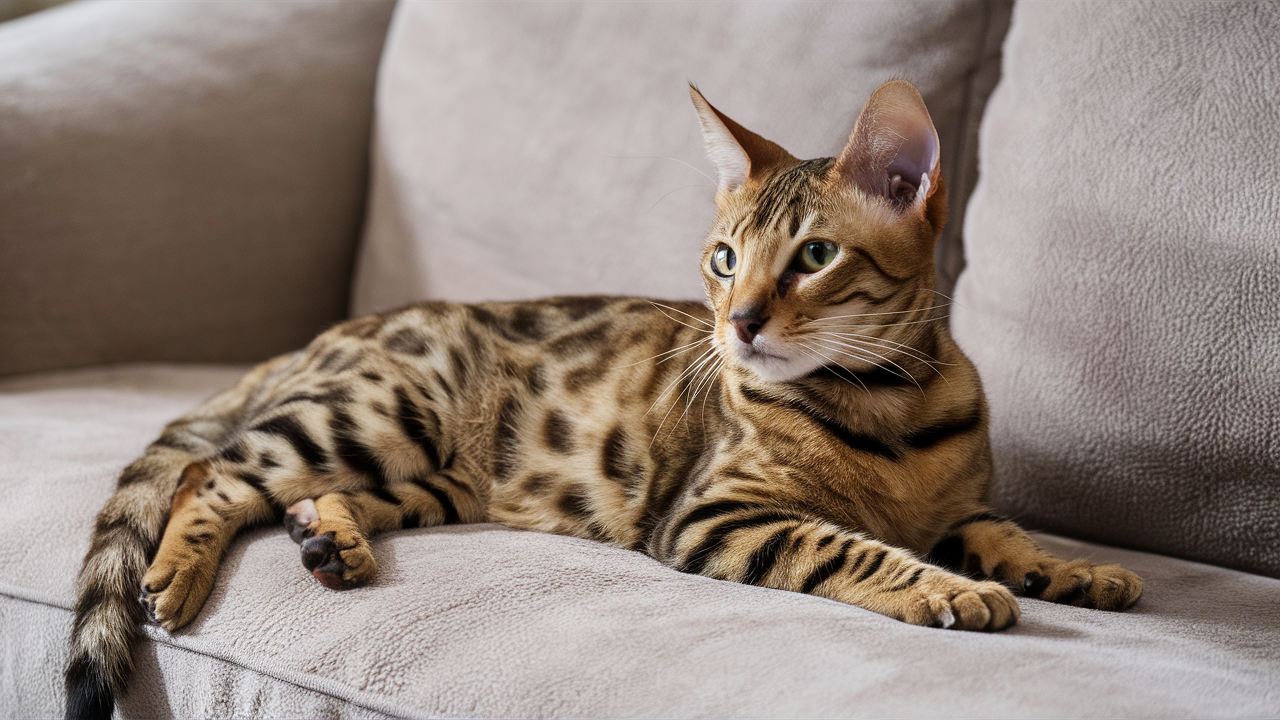Introduction
Bengal cats are a fascinating breed known for their striking appearance and wild, exotic looks. But what truly sets them apart are their incredible range of colors and patterns. If you’re curious about the various Bengal cat colors and what makes each one unique, you’ve come to the right place!
Understanding Bengal Cat Colors
The Genetics Behind Bengal Cat Colors
The variety of colors in Bengal cats isn’t just a random occurrence; it’s deeply rooted in genetics. Different genes determine the color and pattern of each cat’s coat. Through selective breeding, breeders have been able to produce a wide array of stunning colors and patterns.
Common Color Genes
The primary genes responsible for Bengal cat colors are those that control pigment production. Melanin is the key pigment, and its presence or absence in the hair shafts determines whether a Bengal will be brown, snow, silver, or any other color.
Role of Selective Breeding
Selective breeding plays a crucial role in the color variations seen in Bengal cats. By carefully choosing parent cats with desirable color traits, breeders can produce kittens with specific and often rare colorations.
Popular Bengal Cat Colors
Brown Bengal Cats
Brown Bengal cats may be the most common and easily recognizable. They can range from a light golden hue to a deep, rich mahogany.
Variations in Brown Shades
The brown coloration can vary significantly, with some cats sporting warm, golden tones while others have cooler, darker shades. These variations add to the uniqueness of each individual Bengal.
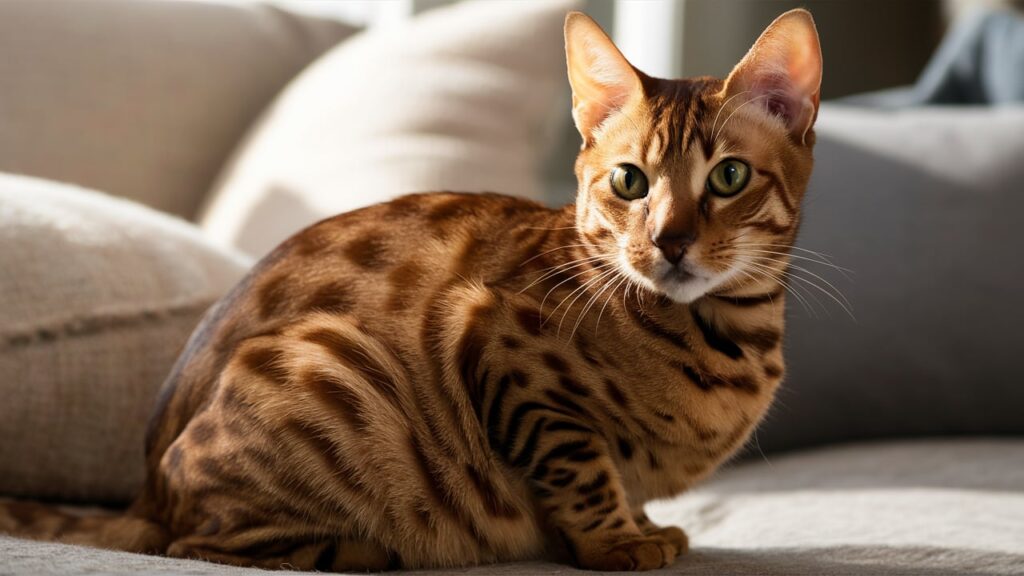
Spotted and Marbled Patterns
Within the brown category, Bengals can have spotted or marbled patterns. Spotted Bengals have distinct spots or rosettes, while marbled Bengals display a swirling pattern that resembles marble stone.
Snow Bengal Cats
Snow Bengals are another popular variation, characterized by their lighter, almost white fur.
Types of Snow Bengal Cats
There are three main types of Snow Bengals: Seal Lynx, Seal Mink, and Seal Sepia. Each type has its own unique color points and markings, making them distinct from one another.
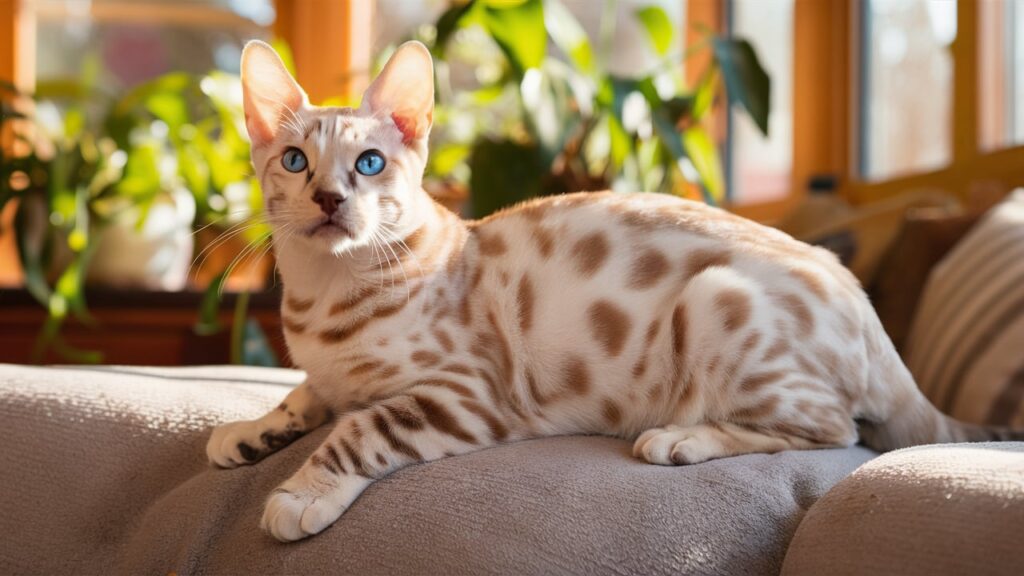
Understanding Color Points in Snow Bengals
Snow Bengals often have darker color points on their ears, faces, paws, and tails. These points can be brown, gray, or even warm gold, depending on the type of Snow Bengal.
Silver Bengal Cats
Silver Bengals are known for their cool, metallic sheen that sets them apart from the warmer tones of brown Bengals.
Characteristics of Silver Bengals
The silver coloration in these Bengals is due to the inhibition of warm tones in their fur, leaving a striking silver appearance. They often have black or dark gray patterns that contrast beautifully with their silver coats.
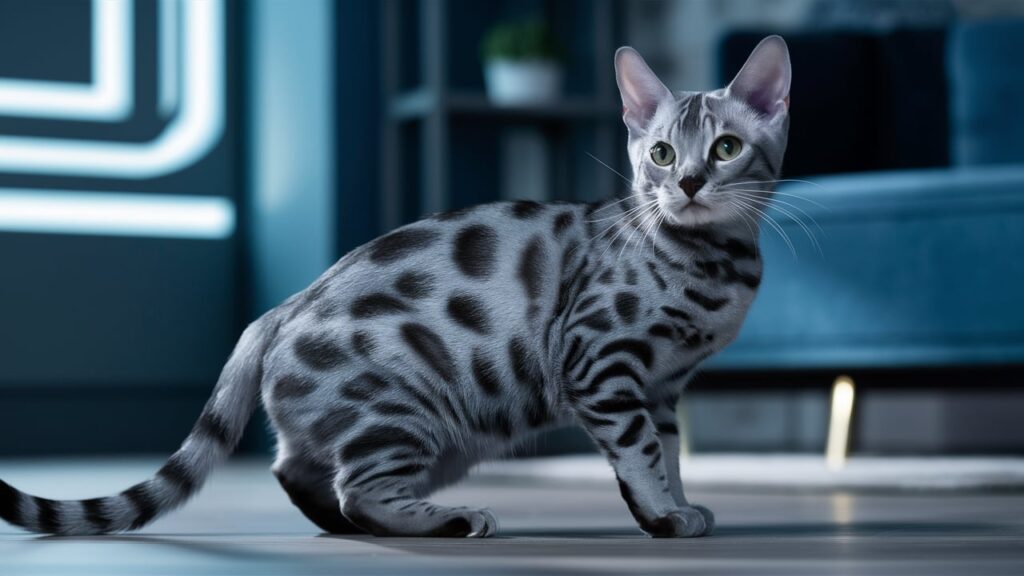
Maintaining the Silver Sheen
To keep a Silver Bengal’s coat looking its best, proper grooming and a healthy diet are essential. This helps maintain the luster and shine that makes them so eye-catching.
Rare Bengal Cat Colors
Blue Bengal Cats
Blue Bengals are one of the rarest and most sought-after colors in the Bengal breed.
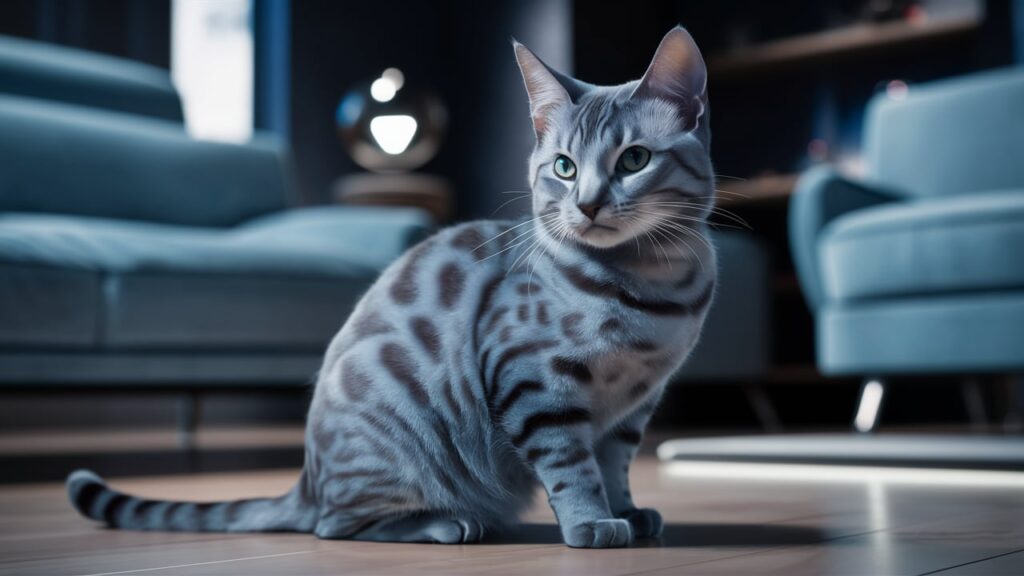
What Makes Blue Bengals Unique?
Blue Bengals have a smooth bluish-gray coat due to a diluted color gene. Their patterns can be either spotted or marbled, and the contrast between their blue-gray fur and darker markings is truly striking.
Charcoal Bengal Cats
Charcoal Bengals are another rare variation, known for their darker and more intense color patterns.
The Darker Side of Bengals
Charcoal Bengals typically have a dark gray or black mask on their face and a thick, dark dorsal stripe running down their back. This gives them a wild and mysterious appearance.
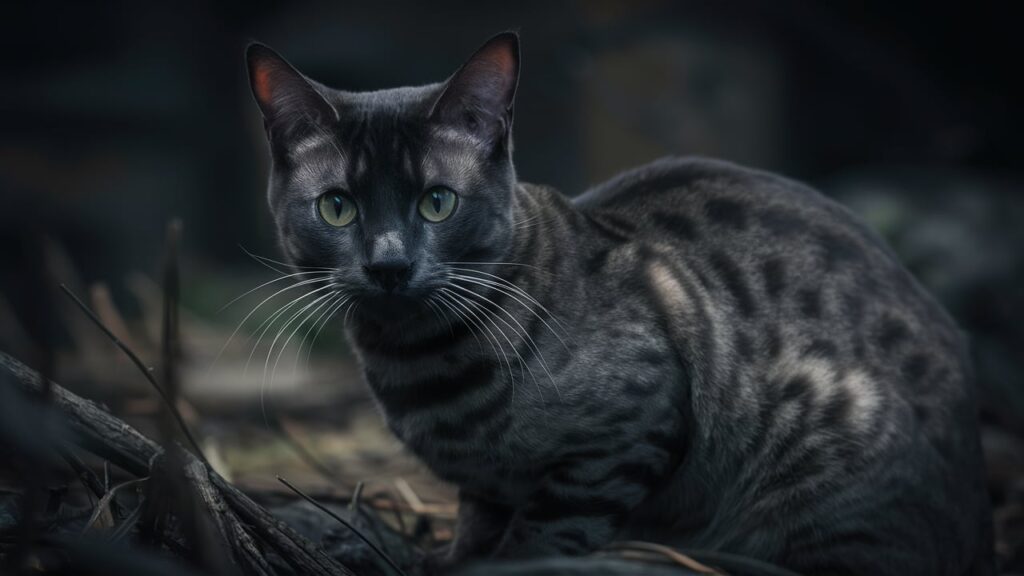
Melanistic Bengal Cats
Because of their all-black look, depressed Bengals are frequently referred to as “black panther” Bengals.
The Mystery of the Black Bengal
While their coat is solid black, you can still see the ghost of their pattern in certain lighting. This makes them incredibly unique and highly sought after by Bengal enthusiasts.
Patterns in Bengal Cats
Spotted Patterns
Spotted Bengals are known for their leopard-like spots, which can vary in size and shape.
Rosetted Spots vs. Single Spots
Some Bengals have rosette spots, which are two-toned and resemble the spots on a leopard, while others have single spots that are solid and uniform in color.
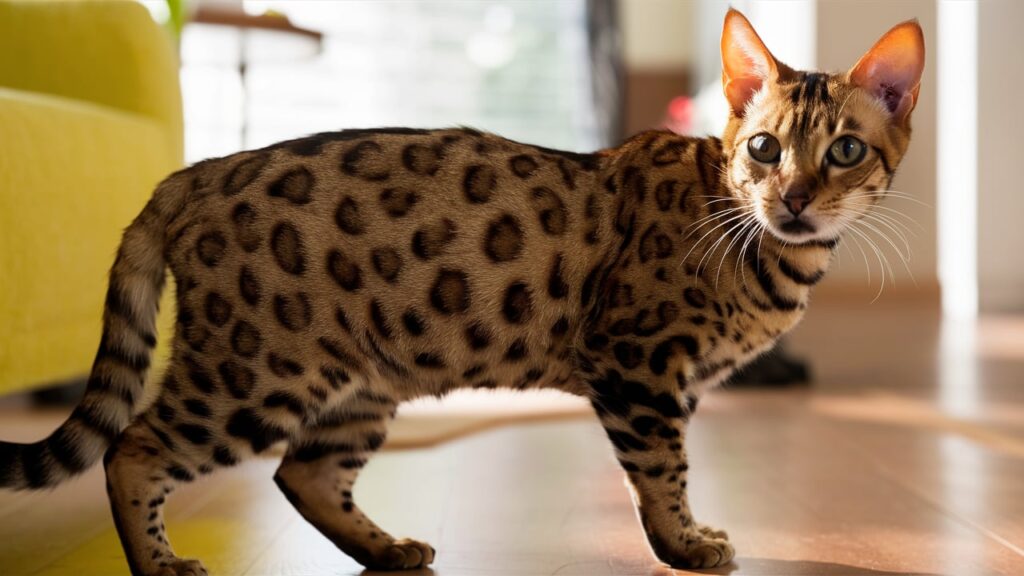
Marbled Patterns
Marbled Bengals have a swirling pattern that is more random and less uniform than spots.
How Marbled Patterns Develop
The marbled pattern develops as the cat matures, often becoming more defined and intricate as they grow.
Choosing the Right Bengal Cat Color for You
Considerations for Families
When choosing a Bengal cat, consider how the color might fit into your household. Brown Bengals, for example, might blend well with a warmer, earth-toned home, while a Silver Bengal might stand out in a more modern, cool-toned space.
Matching Colors to Personal Preferences
Your personal preference plays a significant role in choosing a Bengal cat color. Whether you’re drawn to the wild look of a charcoal Bengal or the elegance of a snow Bengal, there’s a Bengal cat color that’s perfect for you.
Caring for Your Bengal Cat’s Coat
Grooming Tips
Regular grooming is essential to keep your Bengal’s coat looking vibrant and healthy. Brushing a couple of times a week helps remove loose fur and keeps the coat shiny.
Maintaining Color and Shine
A high-quality diet rich in omega-3 fatty acids can help maintain the luster and vibrancy of your Bengal’s coat. Avoiding exposure to harsh sunlight can also prevent color fading.
Diet and Its Impact on Coat Color
What your Bengal eats can impact their coat color and health. Feeding them a diet rich in protein and essential nutrients will keep their fur in top condition.
Conclusion
Bengal cats come in a stunning array of colors and patterns, each more beautiful than the last. Whether you’re drawn to the classic brown, the ethereal snow, or the striking silver, there’s a Bengal cat out there that’s perfect for you. Their unique colors and patterns are a testament to the careful breeding and genetics that go into creating this exceptional breed.
FAQs
What is the rarest Bengal cat color?
The rarest Bengal cat color is the Blue Bengal, known for its soft bluish-gray coat and striking appearance.
How do Bengal cats get their colors?
Bengal cats get their colors from a combination of genetic factors and selective breeding, which determines the specific pigments and patterns in their fur.
Do Bengal cat colors change over time?
Yes, Bengal cat colors can change as they mature, particularly in the first few months of life, as their patterns become more defined.
Are Bengal cat colors linked to their personality?
While color doesn’t directly influence personality, some owners believe that certain colors, like the darker Charcoal Bengals, might be more mysterious or reserved.
How do I maintain my Bengal cat’s coat color?
Maintaining a Bengal cat’s coat color involves proper grooming, a healthy diet, and avoiding excessive sunlight, which can fade their fur.
